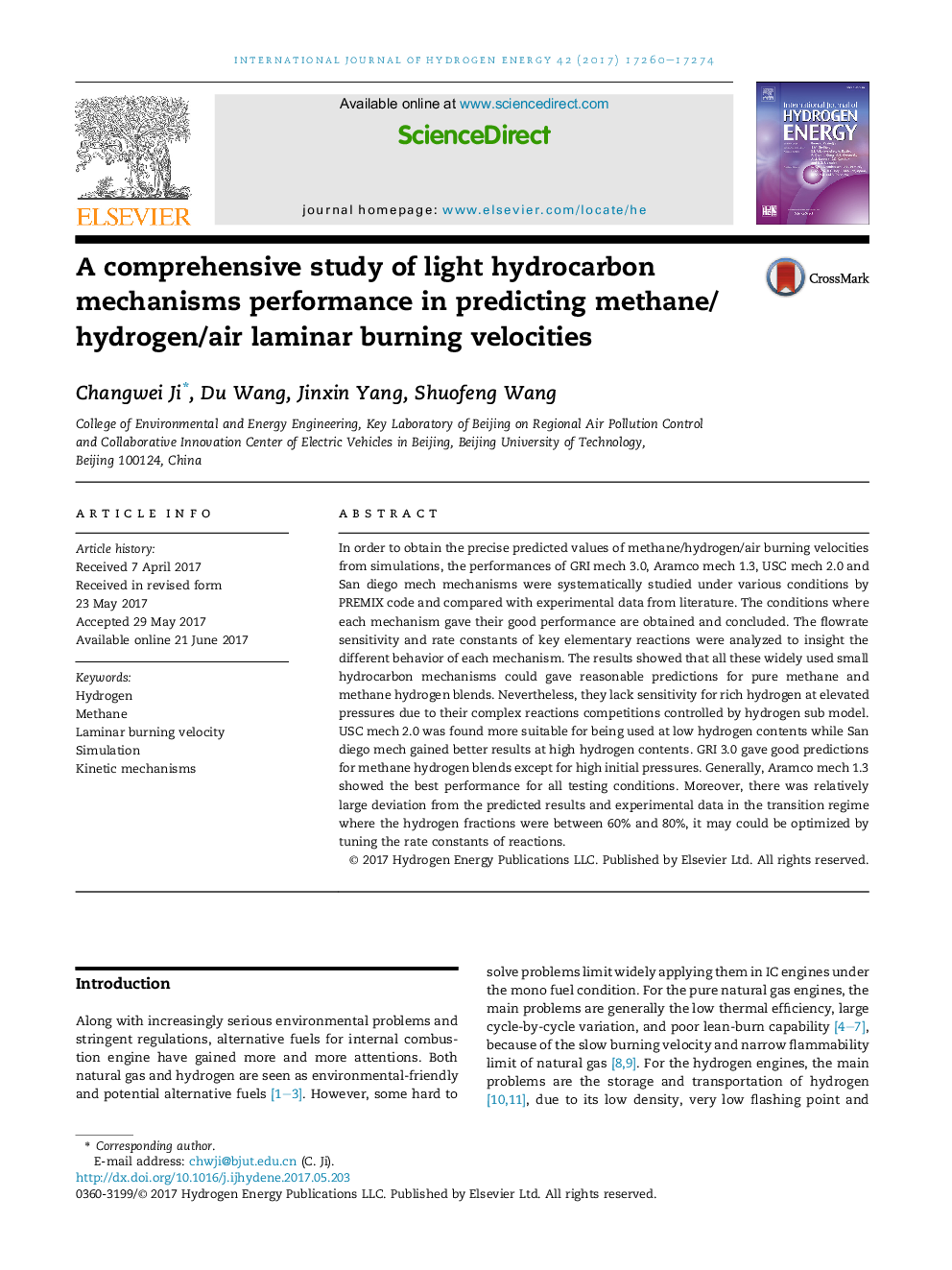| Article ID | Journal | Published Year | Pages | File Type |
|---|---|---|---|---|
| 5146049 | International Journal of Hydrogen Energy | 2017 | 15 Pages |
â¢CH4/H2/air burning velocities were predicted and compared by four mechanisms.â¢Simulation results were compared with experimental results from literature.â¢Sensitivity coefficient and several rate constants of key reactions were analyzed.â¢Conditions where each mechanism exhibits best performance were presented.
In order to obtain the precise predicted values of methane/hydrogen/air burning velocities from simulations, the performances of GRI mech 3.0, Aramco mech 1.3, USC mech 2.0 and San diego mech mechanisms were systematically studied under various conditions by PREMIX code and compared with experimental data from literature. The conditions where each mechanism gave their good performance are obtained and concluded. The flowrate sensitivity and rate constants of key elementary reactions were analyzed to insight the different behavior of each mechanism. The results showed that all these widely used small hydrocarbon mechanisms could gave reasonable predictions for pure methane and methane hydrogen blends. Nevertheless, they lack sensitivity for rich hydrogen at elevated pressures due to their complex reactions competitions controlled by hydrogen sub model. USC mech 2.0 was found more suitable for being used at low hydrogen contents while San diego mech gained better results at high hydrogen contents. GRI 3.0 gave good predictions for methane hydrogen blends except for high initial pressures. Generally, Aramco mech 1.3 showed the best performance for all testing conditions. Moreover, there was relatively large deviation from the predicted results and experimental data in the transition regime where the hydrogen fractions were between 60% and 80%, it may could be optimized by tuning the rate constants of reactions.
